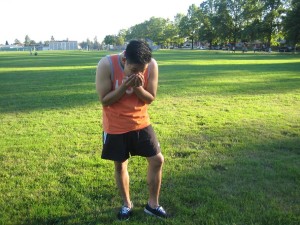Dust allergy can cause symptoms such as breathing difficulty and even instigate asthma-like symptoms such as coughing, wheezing, shortness of breath and chest tightness. In some cases, dust will only cause itchiness.
An individual with dust allergy often suffer the most inside their own house or when staying in other houses. Surprisingly, the symptoms tend to worsen during or right after sweeping, vacuuming and dusting. This is due to the fact that the cleaning process can stir up the dust particles, thus making them easier to inhale by those who are in the area.
Signs and symptoms of dust allergy
- Runny or stuffed nose
- Sneezing episodes
- Red, teary or itchy eyes
- Itching
- Coughing, wheezing, shortness of breath and chest tightness

What are the triggers?
There are various triggers for dust allergy and tend to vary from one individual to another.
Dust mites
Dust mites thrive and multiply in warm, humid areas usually at temperatures at or above 70 degrees F. Dust mites are considered as the common cause of dust allergy. The dust mite particles are usually found in mattresses, pillows, upholstered furniture and carpeting. When vacuuming, these particles float into the air which is too tiny to be seen. They could not be removed with normal cleaning methods.
Mold
Mold is basically a fungus that produces spores that float in the air. Once an individual with mold allergy inhales the spores, the allergy symptoms occur. Remember that mold can thrive in any area, particularly on moist spaces such as kitchens and bathrooms as well as logs and fallen leaves. The miniscule mold particles are the common components of household dust and might be responsible for triggering dust allergy.
Cockroaches
The tiny particles from cockroaches are a common component of household dust. This is why it might be the cause of dust allergy.
Animal fur, hair and feathers
Pets can cause issues among those who have allergies. The saliva, dander and urine can trigger an allergic reaction, especially when mixed with household dust.
Pollen
Many individuals are allergic to various types of pollen. Take note that pollen can be a component of household dust, thus triggering the symptoms of dust allergy in some individuals.
Management of dust allergy
The ideal way to manage dust allergy is to avoid the triggers. There are several measures that can help minimize exposure to the allergens.
- Switch to wood flooring if possible, especially in the bedroom.
- Utilize “mite-proof” cases on pillows and mattresses. All bed linens should be washed regularly using hot water.
- The house should be cleaned regularly using a vacuum with a HEPA filter. Among those who have the allergy, it is recommended to use an N95 mask while sweeping, dusting or vacuuming.
- Keep pets out of the bedroom at all times.
- A HEPA air cleaner must be used in the bedroom.
- Proper disposal of food wastes in a tightly sealed garbage bin.
Medications
If minimizing exposure to indoor dust could not provide relief, the doctor might recommend over-the-counter or prescription medications such as antihistamines and decongestants. These medications will help alleviate symptoms such as runny or stuffy nose, itching and sneezing.
